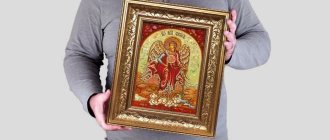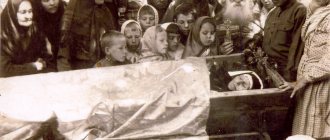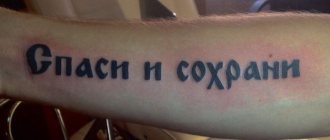"Save me, God!".
Thank you for visiting our website, before you start studying the information, please subscribe to our Orthodox community on Instagram, Lord, Save and Preserve † - https://www.instagram.com/spasi.gospodi/. The community has more than 60,000 subscribers. There are many of us like-minded people and we are growing quickly, we post prayers, sayings of saints, prayer requests, and timely post useful information about holidays and Orthodox events... Subscribe. Guardian Angel to you!
A funeral is an event that can affect any person living on earth. Russia has developed its own traditions and customs of carrying out the last journey of the deceased. An interesting question: what clothes do Orthodox women wear when they are buried?
Preparing the body of the deceased for burial
Special people were invited to carry out the preparation. It was believed that a person should appear before God pure in soul and body. Before death, the believer confesses and prepares in every possible way for a meeting with the Almighty. But he cannot take care of his body. All procedures are carried out after death. People who prepare the body of the deceased and things for the funeral differ from others in their purity of spirit and soul. They are not subject to earthly passions, and also have no family ties with the deceased. Stages of body preparation:
- the deceased is washed, most often a woman is invited for this purpose, but this function is performed by employees of the morgue or funeral agency, but if none of the options are suitable for various reasons, the washing can be performed by a friend of the deceased (of the same gender);
- retouching: one of the ritual services is the camouflage of defects on the skin using special makeup (scars, initial signs of decomposition, etc.), this allows loved ones to accompany the deceased on their way, say goodbye to him, and remember him the same as during life;
- embalming: carried out to preserve the body longer when it is not possible to quickly bury the deceased or when it is planned to transport him;
- dressing in funeral attire: buying a set for a coffin, funeral clothes, or putting on the deceased something that he has not yet worn, which was prepared in advance.
After washing the body, the water becomes “dead”, it cannot be poured into the sewer, it must be taken to a place where no one has set foot, grass does not grow, and the container should be broken, only then taken to a landfill so that no one can use it. Water after washing dishes at a funeral dinner is also drained into a deserted place.
Body preparation
How the deceased is dressed
The deceased can be dressed by morgue employees, funeral agency staff or relatives. In most cases, vesting is carried out in the morgue, after washing the body.
It is recommended to buy clothes for a woman’s funeral not in a regular store, but in a funeral agency. This decision is related to the peculiarities of tailoring. In a funeral store you will quickly find exactly what you need. The cut of such clothes is always loose, there is a slit on the back to make it comfortable for the deceased to dress.
Factors in choosing burial clothing
You should not think that there is a universal outfit for everyone. The burial of people of different ages, genders, and body parameters involves changing the details of the vestments. Other criteria are also taken into account:
- Family status;
- social status of the deceased;
- the will of the deceased, formalized in accordance with the law, since only documentary evidence can be taken into account, what was said in words is often forgotten, not taken into account or even deliberately ignored.
Previously, a person would select the right suit and outfit for a funeral in advance. Today this tradition has been lost; it is customary to dress the deceased in the clothes chosen by relatives, but they do not always carefully select things.
Clothes for burial
Requirements for the vestments of the deceased for Orthodox, Muslims, Buddhists and other religions
According to the canons of Orthodoxy, there are quite a lot of details of clothing for a woman’s funeral, and less in a man’s wardrobe. Each thing has its own meaning. There are requirements for different items of clothing:
- dress;
- shoes;
- headdress.
Funerals of representatives of other religions are carried out according to different rules:
- Muslims: for men a shroud is intended, which consists of 3 items, for women - of 5, it is recommended to use incense, this ritual helps prevent the appearance of the smell of decomposition;
- Buddhists: clothes for funerals can be black or white, a suit is prepared for men, a closed dress for women, but you can also choose a traditional outfit in the East (in China) - a kimono, which is also considered suitable clothing for the deceased;
- Jews: jewelry is prohibited, the only possible vestment is a shroud;
- Catholics: the color of clothing is discreet, there should be no jewelry, except for the pectoral cross.
In addition, different peoples have their own traditions. If you are interested in what people are buried in abroad, you can pay attention to the customs adopted in neighboring states and republics that are part of the Russian Federation:
- Kazakhstan: if the deceased professed Islam, then he must rest in a shroud (the same rules as for Muslims), but men wear a turban;
- Tatarstan: funerals are carried out according to Sharia law, for the Tatar they prepare a shirt with an apron and a turban, for women their heads are covered with a scarf, the body is wrapped in strips of fabric.
Jewish burial shroud
Comfortable to put on, size and shape
It is recommended to choose new clothes that fit properly. The deceased must look dignified in the coffin, since funerals are often held with the coffin lid open. If there is not enough knowledge of what the deceased is buried in according to Orthodox custom, it will be correct to prepare clothes, as for other cases: they should be comfortable, suitable in size and shape. When the item is smaller, it is problematic to put it on the deceased. It will tear. If the deceased's clothing is larger, the appearance is much worse.
A woman's dress should have a zipper: at the back or on the side, otherwise it will not go through the head, especially considering that the process of rigor mortis has already begun. When there are no other options, it is allowed to make cuts where they are not visible. If possible, women's burial clothing should be preserved intact.
The clasp should be at the back
Preferably new
For a funeral, items purchased in a store or prepared in advance (but also new ones) are suitable. You should not use items of clothing that the deceased wore during his lifetime. This strengthens the soul’s attachment to earthly life, making it more difficult for it to go to the next stage of preparation for the Last Judgment. In addition, new clothes for the deceased must be washed. Then you need to iron it. When they say “new things,” they assume that they were stored that way, they were just bought a long time ago. It is not necessary to put newly purchased clothes on the deceased. A suit or dress that has not yet been worn will do, even if you purchased it a long time ago.
An exception when choosing clothes is made when relatives have expressed a desire to bury a loved one in his favorite T-shirt or other thing. The deceased himself can draw up a document during his lifetime confirming his will, which indicates what should be buried in (a list of things is given).
Ritual clothing for burial
Clothes color
Only one option is prohibited - red wardrobe items. Putting them on the deceased is a bad omen. Orthodox Christians must be buried taking into account the following features:
- The recommended color for women's clothing is light;
- men's attire should be dark.
The shades are different, with the exception of an unmarried girl - she is dressed in white.
Women – light, men – dark
Closed and seasonal
To bury the deceased as a true Christian, you need to select things without bright details, they should not be flashy. Ruffles, flounces, flashy colors, ornaments, figures and other designs, as well as inscriptions should be avoided. Dress, skirt - such wardrobe items should not be open: buy products without a neckline, below the knees. It is important to choose the right things - taking into account the season. For winter, clothing made from warm fabrics is suitable. The requirements for it are the same as for the summer one (in shape, appearance).
Complete with shoes
No need to prepare boots, shoes or sandals. If you have no idea what kind of shoes to bury, it is better to study the issue in more detail: preference is given to slippers with a hard back, they can be replaced with shoes of a similar shape (choose low-speed pumps, ballet flats).
Shoes should be 1 size larger. After death, the parameters of the foot may change, it will be difficult to put on slippers or shoes of the usual size, and it is prohibited to press with force, because shoes that do not fit properly will harm the soul.
Burial shoes
Clothing according to the will of the deceased or the will of relatives
It is necessary to evaluate whether the things pre-selected by the deceased for the funeral comply with Orthodox canons, since the rules can also change or be supplemented. If there are no contradictions, the will of the deceased is carried out. Otherwise, you will have to talk with the clergyman, he will help determine the type of clothing for the funeral procession, and explain whether it is possible to violate the will of the deceased if it contradicts church customs.
Robe according to the will
What to wear to a funeral for a man
A classic, formal black suit is an ideal option for representatives of the stronger half of humanity to visit a cemetery. This outfit demonstrates the tragedy and significance of the mourning event, and also expresses respect for relatives and the deceased himself. If there is no completely black suit at home, a man can safely wear a dark brown or dark gray suit to the funeral.
A shirt of a muted shade should not contain patterns or ornaments. As for a tie, bright, and especially red, models are inappropriate for a funeral. If there is a print on the tie, it should be modest and strict. The ideal option is a narrow oblique stripe or a small “crow’s foot” on a dark background. Shoes or boots should correspond to the concepts of mourning wardrobe. They must be combined with trousers and other items of clothing.
If a man plans to attend a funeral service in church, attend a wake, or knows that he will be a pallbearer, then a suit is a must-have attribute of his wardrobe. If a man does not take an active part in mourning rituals, then he can safely come to the funeral in dark jeans without fashionable scuffs, a plain shirt and jacket. In any case, refined taste in clothing at a funeral should not be demonstrated. Modesty and adherence to generally accepted rules of etiquette will help to see off a loved one on their last journey with dignity.
What men are buried in: clothes, hats, accessories
The choice of wardrobe items for women is more difficult, because the range of items is wider. The question of what clothes men are buried in is much easier to resolve. Usually a mourning suit is prepared. Along with it the man is put on:
- shirt;
- socks;
- underwear;
- handkerchief (under the left hand).
It is not recommended to tie anything on the body of the deceased (belts and bows for women, ties for men). Usually these parts of the costume are folded crosswise without making knots. The exception is when a man always wore ties during his lifetime. Then you are allowed to tie it. The same is done with a belt: often this accessory is not used when preparing a deceased person for a funeral procession, but as an exception the Church allows it.
Some secular traditions of other countries have migrated to our time, but have been used for a long time. For example, a uniform (police, military, etc.) was considered a prerequisite for the burial of a person of the corresponding profession. The deceased also had weapons and awards. For this reason, the type of service and social status today determines the appearance of the deceased.
Men's funeral suit
Is a headdress necessary?
The main requirements for the attire of a male deceased relate to the suit. Under normal conditions (the deceased will rest in a suit), there is no need to cover the head. The exception is when traditional clothing is prepared for the funeral of a Tatar man. There are separate burial rules for the military. For burial, the deceased is dressed in a uniform, the cap is attached to the lid of the coffin.
Is it possible to wear men's accessories?
Funeral clothing should be as simple as possible, but at the same time beautiful. Select items for clothing of the same color scheme and make sure they match. However, it is not customary to wear accessories for the deceased. A loved one (husband/wife) keeps them. Cufflinks can rarely be found on a corpse and only in cases where the relatives of the deceased really liked these accessories. Then they are placed in a coffin before the funeral.
Clothes and accessories
Should I wear a black scarf at a funeral?
Everyone knows that in the Orthodox faith a woman must walk with her head covered. Despite the fact that times have already changed, and in everyday life women do not cover their heads with a headscarf, however, when going to church, every woman does this.
In fact, many argue that women began to wear a headscarf not because it is written so in the Holy Scriptures, but for safety reasons. After all, when there are a lot of people in the church, there is a high probability of setting someone’s hair on fire with a candle. So at that time the scarf served as a means of protecting hair.
This is why women are required to wear a headscarf when going to church. But as for the cemetery, girls and women do not have to do this. Despite this, close female relatives always stand with their heads covered at funerals.
Thus, the closest women of a deceased person are required to wear a black mourning scarf. It symbolizes the grief that women bear for a deceased person. Moreover, women wear a black scarf, which is a symbol of grief, not only on the day of the funeral, but also wear it for 40 days. And some even do this before 1 year, thereby indicating their grief. As a rule, this is done by wives and daughters.
What are women buried in - the funeral attire of the deceased
There are many decisions when choosing clothes for the deceased. Modern things (in style, comfort) are inferior to those that were produced earlier, therefore, if possible, they purchase special funeral clothing. Its design is carefully thought out taking into account the peculiarities of dressing on a corpse. The style is more restrained; in comparison, modern dress models are often figure-hugging, contain lace and cutouts, which the Church does not approve of.
Funeral dress
Underwear
When choosing clothes for a funeral, you need to pay special attention to your underwear. It is better to choose underwear of an older style. Loose trousers are suitable for funerals. A deceased person who professed Orthodoxy during her lifetime is not recommended to wear modern underwear (it is not approved by the clergy, as it is considered too revealing). It is also not used by funeral service employees when preparing the deceased for a funeral, because it is difficult to put on.
It is not recommended to leave any accessories, but this is not a ban, rather a custom. Only jewelry made of one type of metal is allowed - gold. The wedding ring is removed. It is later passed on to descendants. A pectoral cross is welcome.
Pectoral cross
Headdress
The deceased is not given her hair; her hair is left loose and carefully combed. Women are recommended to wear a headscarf. But it is not put on the deceased in the traditional way. It is better to avoid knots on the deceased, so it is customary to fold the ends of the scarf crosswise on the chest. Instead, it is permissible to choose a shawl or a thin scarf or scarf. The color should match the robe - light. Often they prefer blue, green, turquoise shades - the face looks less pale. The main purpose of such an accessory is to cover the hair, and it can be part of a funeral attire for young, middle-aged and elderly women. In each case the color is different.
Dress with scarf
Stockings or tights
Part of a woman's funeral attire are stockings/tights. Sometimes people try to change this rule - they wear trousers. But it is undesirable to do this, since violation of traditions and customs can affect the further path of the soul. Stockings must be without elastic bands.
It is necessary to take into account the type of material: cotton is the most suitable option; nylon products quickly tear when dressing the deceased before the funeral.
Shoes
Particular attention is paid to shoes. Slippers are often prepared for funerals. It is less common to put shoes on the deceased. If there is a small heel, there is usually a nail in it, which must be removed before the funeral. Why do this: it is believed that then the road will be smoother for the deceased. But traditionally they choose shoes with flat soles. It should not have open toes. Ballet shoes and flat shoes are the best shoes for the deceased if, for various reasons, it is not possible to prepare slippers.
Funeral slippers
Outerwear
If preparations are being made for the deceased before the funeral, the time of year is taken into account. When it's winter, warmer clothes will do. Down jackets and fur coats are not purchased for funerals. A jacket is enough. In spring, you can wear a lighter outfit. It is permissible to put a thin jacket on top of the deceased. If you can’t choose an outfit so that it fully matches the season, this is not critical. In summer, a dress is enough, but the warmth outside does not mean that you should choose the appropriate outfit: the sleeves should be long, there should be no neckline.
Handkerchief
A ritual scarf is placed in the hands folded on the chest of the woman and the man. It is needed for the deceased of any gender. A handkerchief is needed to wipe away tears in the afterlife, when the soul meets long-dead relatives, or to wipe sweat from the forehead during the Last Judgment.
All the necessary items are on sale, allowing you to put together a beautiful funeral suit for the deceased. The set also includes a scarf. This is a superstition that has taken root, but is still in effect. At the funeral, a handkerchief is placed in the left hand of the deceased. Like all others, this item must be new, clean, ironed. However, a handkerchief in the left hand is not a requirement, and therefore it is not always placed, but often.
Handkerchief as a funeral accessory
Peculiarities of clothing for women of different status and age
There are special traditions when preparing funerals for women of different ages. The only universal rule is that the deceased must be dressed in such things that they cover the body as much as possible. For dressing women over 65, over 35 and under 18, there are individual recommendations regarding the color of the outfit. The deceased is covered with a shroud up to the waist over his clothes.
Unmarried deceased girl
If the deceased was not married and remained pure during her lifetime, then funeral clothes are chosen for her, which are very different from the outfits of women 30, 50 and 80 years old. The girl is dressed in a white wedding dress. It is believed that she becomes the bride of Christ. A funeral in such attire is also an opportunity for an unmarried girl to wear a wedding dress in the afterlife, since she did not manage to get married during her lifetime.
The burial of the deceased in a wedding dress is carried out provided that she was dressed according to all the rules - she also put on a veil, a wreath, and shoes.
Nails are first removed from shoes. Traditionally, hair should be loose. Complex hairstyles, as is often done for a wedding, are not recommended.
Robe for a dead girl
Pregnant deceased
It is believed that a pregnant woman should be buried in a wedding dress. However, a woman who is carrying a child is most often married, so it is better to prepare more versatile items for the funeral. You need to find out what women are buried in in Orthodoxy: a pregnant woman is considered one with the fetus, and therefore there are no special requirements for the attire of a woman in this position. It is recommended to choose a light-colored dress.
Elderly deceased
A woman aged 55-56 years is often called elderly; she will be considered old at 74 years or more. At this age, it is recommended to prepare things in dark colors. Grandmothers are buried in a black scarf and robe of the same color. Clothes for burial can be dark gray, warm blue - alternative shade options in which clothes are selected.
Clothes for the elderly deceased
What do they dress a man in?
Some traditions of dressing the deceased date back almost to the time of the Scythians. As we have already mentioned, it is customary for a person who was a military man (with the exception of a retiree), a policeman or a firefighter during his lifetime, to be buried in full uniform, and front-line soldiers often ask to be buried not only in it, but also along with their awards. This is a remnant of the oldest tradition of military funerals that has survived to this day. As you know, it was customary to bury the dead or deceased warriors of the princely squad and the prince/leader himself in full combat gear and always with their weapons, and they had to fulfill the same role in the afterlife that they performed during the life of their owner. That is, in the understanding of the pagan Slav, weapons were first of all an object of necessity and only then an indicator of the lifetime status of the deceased. Such traditions were characteristic of many ancient peoples at different stages of development, and the Slavs in this sense were no exception. In this regard, the role of awards in which front-line soldiers ask to be buried is interesting. Considering the symbolism of many details of funeral clothing, it can be assumed that the awards are a subconscious replacement for the weapon and at the same time the result of its service to its owner, as well as an indicator of the valor shown by him on the battlefield. The Church is generally tolerant of such requests and traditions - at least in no source have we encountered any outright rejection of them by clergy. The only requirement that can be seen concerns the color scheme of men's funeral clothing: it should be discreet, preferably dark tones or black.
A civilian's clothing set should include:
- underwear.
- socks.
- shirt.
- blazer.
- trousers.
- shoes, if possible – without heels. For an elderly person, slippers without hard soles are acceptable.
Opposing opinions can be found regarding whether or not a tie and belt should be worn on the deceased. Some sources classify a tie as a desirable but optional accessory for the deceased’s clothing, but leave this to the discretion of loved ones. Some are guided by the tastes of the deceased during his lifetime: they say, if he loved and wore ties, then it would be logical if the tie became part of the funeral clothes. As for the waist belt, the appropriateness of its use is also left to the discretion of the people involved in the funeral and dressing of the deceased, especially since it is not visible under clothing. On the other hand, one can come across a statement with reference to the Psalter that Christian customs categorically prohibit putting a tie and belt on the deceased - they say, this means subjecting him to posthumous torment. It is difficult to say who is right in this case, so it would probably be best to consult a priest.
Question-answer section
Is it possible to do makeup for the deceased?
Expert opinion
Lavrova Tatyana
Rehabilitation specialist, psychologist
Even if a person died recently, after death his facial features and oval gradually change. If you look at the deceased, the effect of surprise is possible - his appearance will differ from the usual image. For this reason, specialists who apply post-mortem makeup to the deceased before the funeral are popular. They are called thanatocosmetologists. They offer their services privately or work in funeral service agencies.
Posthumous makeup
Where can you buy clothes for the deceased?
Expert opinion
Gennady Gennadievich Lopyrev
Director of a funeral agency
The easiest option is in a store where they buy things for daily wear. But the models of things there are not always suitable for putting on a dead body. In such stores you can buy clothes that a relative can wear to a funeral or wake. However, there are almost no necessary outfits to dress the deceased. It is better to go to special stores that offer an assortment of items specifically for the deceased. There is a wider range here, you can immediately choose and buy the appropriate option.
Special shop
Who should dress the deceased?
Expert opinion
Krivosheeva Lyudmila
Pathologist
Today, almost no one dresses the deceased at home. This is done by employees at the morgue (if things are handed over to them on time) or at a funeral service agency. What the outfit will be is agreed upon in advance; often things are provided by relatives, but you can order a service for choosing clothes for the funeral. Many include it in the general price list.
Funeral Home Clerk
Is it possible to bury a man in a suit and shoes that he rarely wore?
Expert opinion
Lavrova Tatyana
Rehabilitation specialist, psychologist
There is a recommendation - to prepare new, clean things to clothe the deceased. But you should know that this is not a strict requirement. Sometimes exceptions are made: the deceased is dressed in his favorite things; clothing items that the deceased wore little during his lifetime can be stored for this purpose. If the clothes are free of defects and look great, they can be washed and ironed. The soul of a deceased person buried in this outfit will not have any difficulties on its way when passing to the afterlife.
Clothes for the deceased
Can relatives dress the deceased?
Expert opinion
Gennady Gennadievich Lopyrev
Director of a funeral agency
It is believed that one person should wash, dress and perform other preparations for the deceased. As a rule, this is not a relative. However, in Russia, in some regions, this is still done by close people.
Preparing the deceased for burial
If the deceased's favorite dress is red, can she be buried in it?
Expert opinion
Lavrova Tatyana
Rehabilitation specialist, psychologist
You need to know exactly what older women and young girls are buried in. If the deceased had a favorite outfit during her lifetime that met the requirements set by the Church for the attire of the deceased, you can prepare it. However, the shade is taken into account, for example, red things are not suitable for a funeral. First of all, it is not a mourning color. But there is a more serious reason not to wear such an outfit for the deceased - it is a bad omen. You should choose other things from those that the deceased loved to wear during her lifetime.
Red clothing is not recommended
Is it possible to apply makeup to a deceased person if her face has been damaged?
Expert opinion
Krivosheeva Lyudmila
Pathologist
There are several methods, selected taking into account the degree of tissue damage:
- makeup is done when the face is not yet affected by pathological processes, as well as when the skin is damaged, but then a different technique for applying cosmetics is used;
- if the process of tissue decomposition has already begun, the deceased is dressed in closed clothes (up to the neck), the face is preserved using a mask based on glycerin and formalin, and makeup is applied;
- In case of more severe damage, no cosmetics are used and the coffin is closed.
Funeral makeup artist
Is it possible to wear a relative’s clothes, but new ones?
Expert opinion
Lantsova Kristina
Esotericist
You cannot use other people's things to prepare the deceased for the transition to another world. It is believed that the person whose clothes the deceased is wearing may fall ill or go after a deceased relative. Things for a funeral must be new, but sometimes it is allowed to take an outfit from the wardrobe of the deceased himself.
New suit
Is it necessary to wear a funeral scarf?
Expert opinion
Lavrova Tatyana
Rehabilitation specialist, psychologist
To prepare for the funeral of middle-aged and elderly women, it is imperative to use a scarf to cover their heads. This does not need to be done if they are burying a young girl who has not yet been married.
Scarf to cover the head of the deceased
What should a woman or a man who has changed gender and orientation wear?
Expert opinion
Father Pavel
Clergyman
The Church does not recognize transgender transition. According to Orthodox canons, this is a great sin - you need to accept yourself in the body given by God. If a person changed his gender before baptism, then he will undergo this ceremony only as a representative of the gender given at birth. The same should be done during a funeral. Russian traditions are still strong, so today the transgender transition has not taken root as strongly as in the West (Europe, USA). Such cases are rare in the Russian Federation.
Clothes for women and men
Shoes for a woman's funeral?
Expert opinion
Krivosheeva Lyudmila
Pathologist
Slippers are a universal type of footwear, suitable for men and women when preparing for a funeral. It is necessary to take into account not only aesthetic properties, but also the degree of comfort for the soul when it begins the journey. In such shoes the spirit will walk softly on it. But it is also permissible to wear shoes with flat soles. Heels are not a suitable type of footwear, but low-heeled models are sometimes chosen. If possible, you should purchase slippers or ballet flats.
What do women bury in winter?
Expert opinion
Gennady Gennadievich Lopyrev
Director of a funeral agency
In the cold season, funeral items should be appropriate for the weather. But outerwear is not used. It is enough to prepare warm clothes for the deceased: a skirt, cotton stockings, a sweater or jacket, you can buy a suit (a trouser suit will not work). A down jacket or coat is impractical - it will take up a lot of space. In addition, the lower part of the deceased’s body is covered with a shroud. This means that outerwear is simply inappropriate at a funeral when the deceased is dressing.
Cardigan for funerals in the cold season
What do Orthodox men bury in: clothing according to church customs in winter?
Expert opinion
Lavrova Tatyana
Rehabilitation specialist, psychologist
Men are buried with their heads uncovered. From the items, those that will be more relevant in winter are selected. This could be a warm suit: jacket, trousers. You should give preference to woolen material over cotton and linen. According to Orthodox canons, the deceased is required to wear a shirt, socks, and underwear.
Men's set
Features of the burial of a Muslim woman. List of necessary items
Men, like women, are buried without clothes. Instead of the usual wardrobe items, they use a shroud. The female version is five-part:
- lyphopha – covers the entire body;
- isor – part for the lower half;
- kamis - a shirt with a cutout for the head and no collar;
- khimor - a scarf to cover the head;
- pickaxe – the fabric that covers the chest.
Muslim funeral clothing
What types are they?
Analyzing the offers of companies offering funeral services, we can say that shoes for funerals are usually of two colors - black and white. Often these are slippers made of soft textiles. The backdrop is required . Upon special request, funeral shoes can be equipped with embroidery in various colors. More often they offer to embroider crosses or prayers.
The most expensive option is custom-made shoes made of genuine leather in white, black or beige . The women's version of these shoes is very similar to regular flats without heels. Unless with a very soft sole. There will be no buckles, fasteners or laces on such shoes.
With the development of funeral services, problems with choosing shoes are becoming less and less. But if the old person has already prepared everything and chosen ordinary shoes, is it necessary to go against the grain and buy what is “supposed”?
What does “dressed to the nines” mean?
Features of boho style for women over 50 years old
Funeral customs and signs
When preparing a deceased person for funeral, various customs are taken into account. Signs help to avoid mistakes and make the path easier for the soul of the deceased.
You cannot tie a belt or a scarf.
Any knots on the body of a deceased person are a symbol of fetters. It is better to rid him of such obstacles, then it will be easier for the soul to move away from the body.
Pantsuits are not recommended
Modern fashion goes against Orthodox canons. It is not customary for a deceased woman to wear trousers; such an outfit is not welcomed by the Church. It is better to prepare the traditional version of attire for a funeral - a skirt with a blouse or a dress. Some clergy are so principled that they may refuse to conduct a service.
Red attire is prohibited
Red robes symbolize blood. It is believed that the deceased can take another family member with him if he wears clothes of this color.
Red clothing is prohibited
You cannot put precious jewelry or a wedding ring in the coffin.
Rings and bracelets are a symbol of the connection between the physical and energetic shells. It is recommended to remove such jewelry from the deceased before the funeral. You shouldn’t leave these things in the coffin either; it’s better to pass them on to your descendants later.
You can put personal favorite things, cosmetics and perfumes
It is not recommended to leave many objects in the coffin. There are several optional things that are conditionally permitted: a book, a piece of paper with a prayer, a toy for a child, etc. If you really want to, it is permissible to leave one of your favorite items to the deceased, it could be a bottle of perfume, but this is not recommended, because such tricks are superstition and violate the canons of Orthodoxy.
Is it necessary to comply with this?
Funeral rites, much more than any other, have become overgrown with a variety of conventions. And all these signs sometimes vary greatly - not just in different areas, but even in different families.
In fact, there are no strict and inflexible requirements for the color of funeral shoes . In Soviet times, this was treated more simply - there were no funeral service stores at all, and when there was a total shortage, they would shoe and dress the deceased without observing clear conditions. Grannies, when collecting a bundle “for death,” put quite ordinary house slippers in it. And the grandfathers, like true Soviet people without prejudices, did not worry about anything like that at all. And in religious families, as far as we know, there is not and never was such a strict tradition regarding white slippers. But now many funeral service companies offer similar shoes for the deceased. However, they also have some choice.










